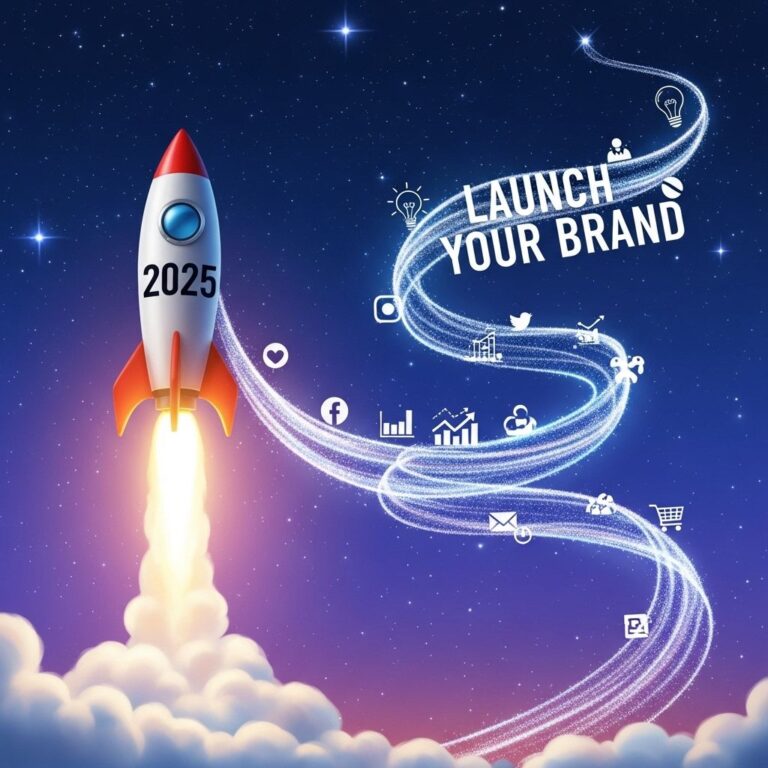In today’s competitive market, establishing a strong brand identity is crucial for businesses looking to stand out and connect with their audience. A well-defined brand identity helps create an emotional connection with customers, builds trust, and communicates the values and mission of the brand effectively. To achieve this, various tools and resources can assist in the process of developing and maintaining a consistent brand identity. In this article, we will explore ten essential tools that can help brands articulate their identity and presence in a visually appealing and impactful way.
Table of Contents
1. Branding Guidelines
Branding guidelines serve as a blueprint for how a brand should be represented across various media. These guidelines typically include the following:
- Logo usage
- Color palette
- Typography
- Imagery
- Brand voice and tone
Establishing comprehensive branding guidelines ensures consistency and coherence in all brand communications, whether online or offline.
2. Logo Design Software
A logo is often the first impression consumers have of a brand. Therefore, using robust logo design software is essential. Here are some popular tools:
- Adobe Illustrator: A vector graphic design software that allows for precise and flexible logo creation.
- Canva: An accessible online tool that offers templates and design elements for non-designers.
- Sketch: A favorite among UI/UX designers, ideal for creating scalable logos and graphics.
3. Color Palette Generators
Colors evoke emotions and feelings. Choosing the right colors for a brand is critical. Color palette generators can help in this process:
- Coolors: A user-friendly color scheme generator that allows users to create, save, and share color combinations.
- Adobe Color: Create color schemes and explore color trends, plus the ability to extract color themes from images.
- ColourLovers: A community-driven platform that offers color palettes and patterns that can inspire brand designers.
4. Typography Tools
Choosing the right typography is equally important for brand identity. Fonts can communicate different messages and emotions. Here are some typography resources:
- Google Fonts: A vast library of free fonts that can be easily integrated into websites and design projects.
- Font Squirrel: A resource for high-quality, legally licensed free fonts.
- Typekit (Adobe Fonts): Offers a subscription service for premium fonts that are widely used in professional branding.
5. Social Media Management Tools
Social media is a powerful platform for building brand identity. Managing various accounts can be simplified with these tools:
- Hootsuite: Schedule posts, track performance, and manage multiple social media accounts from one dashboard.
- Buffer: Another excellent tool for managing social media, allowing for easy scheduling and analytics.
- Sprout Social: Offers robust reporting features and engagement tools to enhance brand interaction.
6. Website Builders
Your website is often the central hub of your brand identity. User-friendly website builders can help create a strong online presence:
- Wix: Offers drag-and-drop features, making it easy to design a professional-looking website.
- Squarespace: Known for its beautiful templates and integrated e-commerce features.
- WordPress: A highly customizable platform suitable for bloggers, businesses, and portfolios.
Comparing Website Builders
| Tool | Ease of Use | Customization | E-commerce |
|---|---|---|---|
| Wix | Very User-Friendly | Moderate | Yes |
| Squarespace | Moderate | High | Yes |
| WordPress | High Learning Curve | Very High | Yes (with plugins) |
7. Graphic Design Tools
Visual elements play a significant role in brand storytelling. Graphic design tools can help you create stunning visuals:
- Adobe Photoshop: Ideal for image manipulation and complex design work.
- Canva: Also great for graphic design, especially for social media and marketing materials.
- Figma: A collaborative interface design tool perfect for web and app design.
8. Customer Feedback Platforms
Understanding how your audience perceives your brand is vital. Customer feedback platforms can help:
- SurveyMonkey: Create surveys to gain insights into customer opinions and experiences.
- Typeform: Offers an engaging interface for creating forms and surveys to collect feedback.
- Trustpilot: A platform to gather and display customer reviews, which adds credibility to your brand.
9. Brand Monitoring Tools
Staying informed about what is being said about your brand online is crucial. Brand monitoring tools can assist with this:
- Google Alerts: Set up alerts for your brand name or relevant keywords to receive notifications when mentioned online.
- Brand24: A media monitoring tool that provides real-time insights into brand mentions across various platforms.
- Mention: Track brand mentions and analyze your online presence.
10. Content Creation Tools
Content is a powerful way to express brand identity. Here are tools that can enhance your content creation:
- WordPress: Excellent for blogging and managing content-rich websites.
- Medium: A convenient platform for publishing articles and connecting with a community of readers.
- BuzzSumo: Find popular content ideas and influencers to collaborate with.
Conclusion
Establishing a compelling brand identity requires a strategic approach and the right set of tools. From designing a logo to monitoring online reputation, these essential tools can empower brands to define their identity clearly and effectively. By utilizing these resources effectively, businesses can foster a strong brand presence that resonates with their target audience and drives long-term success.
FAQ
What are the essential tools for creating a strong brand identity?
The essential tools for creating a strong brand identity include logo design software, color palette generators, typography resources, branding guidelines templates, social media branding tools, and website design platforms.
How can logo design software enhance my brand identity?
Logo design software allows you to create a unique logo that visually represents your brand, helping to establish recognition and trust among your target audience.
Why is a color palette important for brand identity?
A color palette is important for brand identity because it evokes emotions and associations that can influence customer perception and loyalty.
What role does typography play in brand identity?
Typography plays a crucial role in brand identity by conveying the personality and tone of your brand, ensuring consistency across all marketing materials.
How do branding guidelines help maintain brand consistency?
Branding guidelines help maintain brand consistency by providing clear instructions on how to use logos, colors, fonts, and other brand elements across various platforms.
What tools can I use for social media branding?
Tools for social media branding include graphic design software like Canva, social media management platforms like Hootsuite, and analytics tools to track brand engagement.









